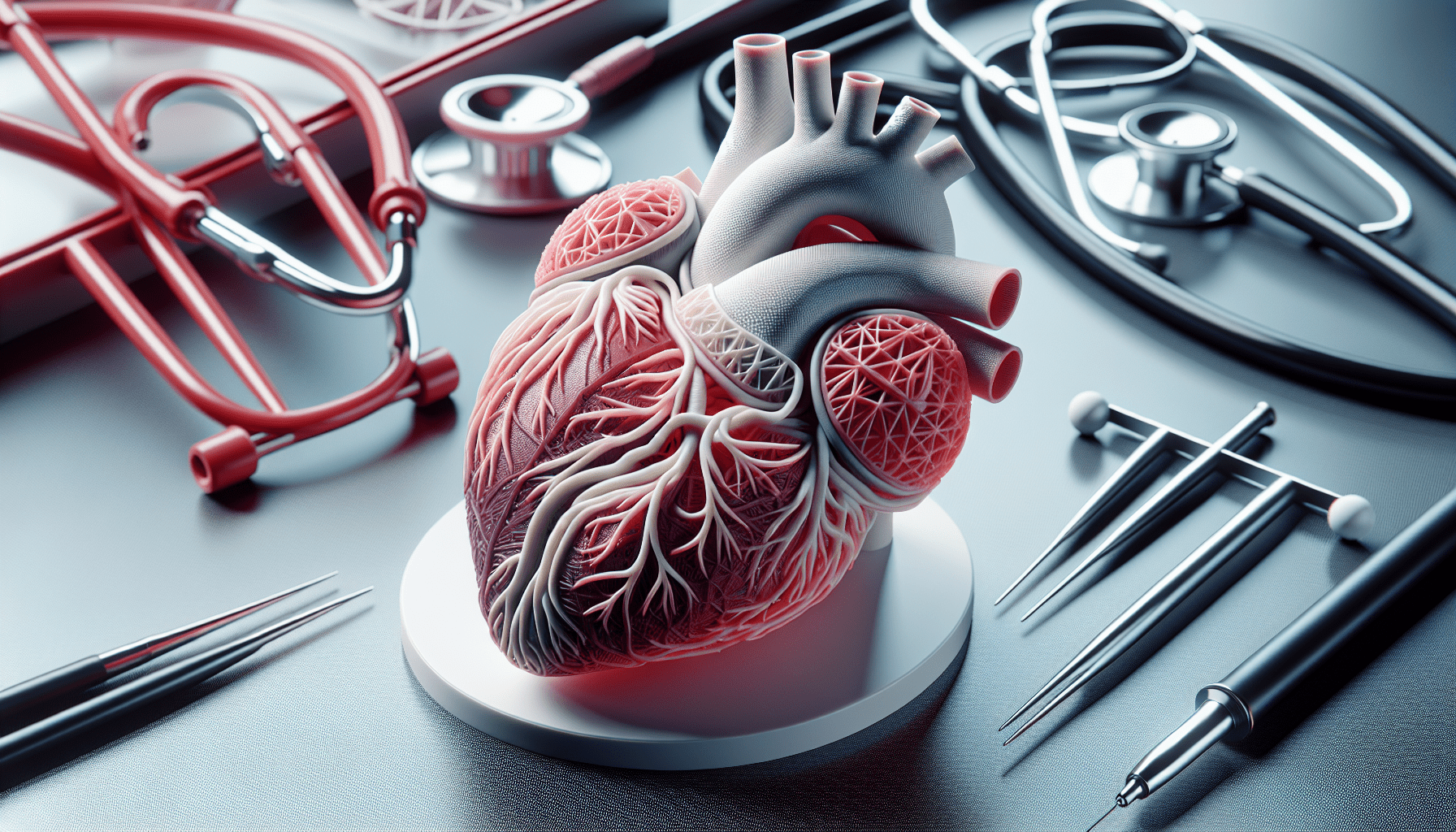ANYCUBIC 10K Resin 3D Printer, Photon Mono 4 LCD 3D Printer with 7-inch Mono Screen, Upgraded LighTurbo Matrix and Printing Platform, Printing Size of 6.04''x3.42''x6.49''
$159.99 (as of June 18, 2025 23:32 GMT +00:00 - More infoProduct prices and availability are accurate as of the date/time indicated and are subject to change. Any price and availability information displayed on [relevant Amazon Site(s), as applicable] at the time of purchase will apply to the purchase of this product.)Have you ever wondered how technological advancements in medicine are transforming the way complex surgeries are performed? In recent years, groundbreaking innovations like 3D printing have begun to play pivotal roles in medical treatments, particularly in tackling intricate cardiovascular abnormalities.
Surgeons Treat Cardiovascular Abnormality with 3D Printing
The usage of 3D printing technology has revolutionized various medical fields, and it’s making remarkable contributions to cardiovascular surgery. A particularly eye-catching example of this is the collaborative effort by Cleveland Clinic Abu Dhabi and NYU Abu Dhabi to treat a rare cardiovascular anomaly in a 41-year-old patient named Mian Mohamed Shabbie.

$30 off $400+ Anycubic Products with code AC30OFF
The Pioneering Technology Behind It
The advanced 3D printing technology developed by NYU Abu Dhabi’s Core Technology Platform stands out due to its comprehensive three-stage process. Each phase is meticulously geared to enhance precision and reduce surgical risks.
3D Image Reconstruction: This initial phase involves creating a three-dimensional model from raw diagnostic imaging data. It lays the foundation for a detailed and accurate digital representation of the patient’s anatomy.
3D Slicing: Following the initial reconstruction, the anatomical structures and organs are sliced into detailed segments. This slicing allows for a more in-depth analysis of the various components, providing surgeons with invaluable insights.
3D Printing: The final phase entails the physical production of the 3D model, offering a tangible replica for the surgeons. This model can be held, examined, and used for pre-surgical planning and simulation, making it easier to navigate complexities during the actual surgery.
Case Study: Mian Mohamed Shabbie
Shabbie’s case involved a rare condition characterized by a congenital defect of the aorta. Unlike the usual left-sided arch, his aorta had a right-sided arch accompanied by a rare aneurysm called Kommerell’s diverticulum.

Buy Photon Mono M5 Get Free 1KG Resin
Kommerell’s Diverticulum: An Overview
Kommerell’s diverticulum is an unusual type of cardiovascular anomaly. It is particularly complex when it presents alongside a right-sided aortic arch, as this combination is rare, seen in only 0.03% of the population globally. This anomaly often remains undiagnosed due to its asymptomatic nature or because its symptoms mimic those of more common conditions. Addressing such a complication demands an exceptionally high level of both physician expertise and technological sophistication during surgical procedures.
The Challenges
Problems arise due to the defect being obscured by other large vessels. Traditionally, correcting such abnormalities on a typical left arch is more straightforward thanks to the deformity being visible and accessible. However, the right-sided arch obscures the defect, complicating the intervention immensely.
Solution and Surgical Precision
Dr. Yazan Aljabery and Dr. Houssam Younes led the team that utilized the 3D printed model to aid in Shabbie’s surgery. The 3D printed heart model significantly improved the safety and precision of the procedure. The pre-surgery simulations conducted using this model allowed the surgeons to plan meticulously, make more accurate incisions, and tailor the intervention to minimize risks and enhance outcomes.
Cleveland Clinic Abu Dhabi: A Centre of Excellence
The Cleveland Clinic Abu Dhabi holds a prestigious designation as a Centre of Excellence for Adult Cardiac Surgery by the Department of Health – Abu Dhabi. This acknowledgment underlines the clinic’s extensive range of integrated cardiac surgery services and its team of globally revered cardiovascular experts. The research and multidisciplinary teams at the hospital continually strive to broaden the application of this technology beyond cardiovascular and neurological sectors to other medical fields involving complex anatomical structures.
Broader Implications for Medical Fields
The successes achieved at Cleveland Clinic Abu Dhabi and NYU Abu Dhabi are likely to pave the way for further advancements. Ongoing research aims to showcase the versatility of 3D printing technology in other complex medical applications, from reconstructive surgeries to personalized medical implants.
Conclusion
The collaboration between Cleveland Clinic Abu Dhabi and NYU Abu Dhabi in treating Mian Mohamed Shabbie marks a significant leap in medical science. It illustrates how 3D printing technology can transform complex cardiovascular surgery into a safer, more precise procedure with reduced risks. As this technology continues to evolve, its applications could expand to various other medical fields, enhancing patient care and surgical outcomes across the board.
By combining detailed anatomical imaging, expert surgical planning, and advanced 3D printing, the medical community is taking bold steps toward a future where complex medical abnormalities can be addressed with unprecedented precision. This transformation is not just about treating rare conditions; it’s about shaping the future of medical interventions for a wide range of complex health issues.
$30 off $400+ Anycubic Products with code AC30OFF








